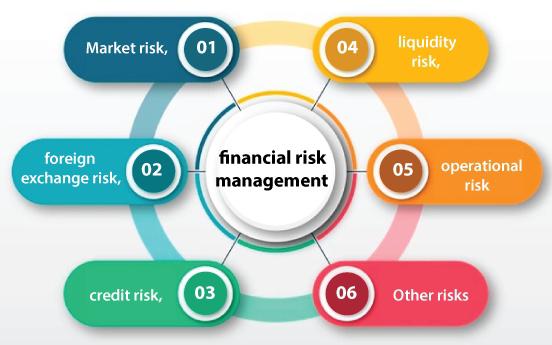There are many types of financial risk, and all businesses face them to some extent. These include liquidity risk, market risk and operational risk.
Liquidity risk occurs when a company is unable to convert assets into cash quickly enough to meet short-term debt obligations. This could be due to a seasonal downturn or inefficient market conditions.
Credit Risk
Most businesses offer some form of credit to customers. This expands the ways in which customers can pay for goods or services and helps increase sales. However, all credit carries risk. If a customer fails to pay or goes bankrupt, the business can suffer losses. To minimize this risk, companies can require customers to provide security or take out insurance.
Other types of financial risk include default risks (the chance that borrowers will fail to pay back debts), interest rate risk and liquidity risk. Default risks are common in the bond market, where companies or governments may fail to pay their debts, hurting investors. Interest rate and liquidity risk occur when changes in market interest rates or raw material costs make a company’s products less competitive or difficult to sell.
Operational risk refers to the likelihood of a company incurring losses because of procedures, systems or policies it has in place. This type of risk can be internal or external and includes everything from technological failures to fraud activity and employee errors. This risk is often overlooked in business analyses and can be minimized with the help of a thorough risk assessment process.
Market Risk
Market risk is the possibility of losses in investments due to changes in financial markets. This can be caused by interest rate changes, commodity prices, foreign exchange rates, and equity price fluctuations. This type of risk is unavoidable and can be minimized by diversifying your investments.
It is important to understand the difference between market risk and business risk. The former is exposure to uncertainty in economic value that can be marked-to-market, and the latter refers to non-market mark-to-market positions such as asset backed securities and loans.
There are several types of market risks, including equity risk (the likelihood that stock prices will change), currency risk (the chance that foreign exchange rates will change), and commodity risk (the risk that staple products such as oil, grain, or copper will be volatile). It is also possible to have country risk, which relates to the stability of a country’s economy and can be affected by political instability, natural disasters, international relations, disease outbreaks, and war. This type of risk is not as common as the other types, but it is still a threat to businesses.
Operational Risk
A business faces various operational risks such as poor quality of products or inefficient processes. It also faces the risk of losing money due to fluctuations in prices and interest rates. These risks can be either internal or external. Internal risks include fraud and IT failures. External risks include natural disasters and political instability.
Another important type of financial risk is income risk. This includes the risk of not being able to pay your debts or other financial obligations. This can be caused by factors such as an unexpected drop in your income, a disability that makes it difficult to work or the death of a loved one. Many businesses have been hit hard by this type of risk. The toy retailer Toys “R” Us, for example, closed in 2018 after declaring bankruptcy and stating that it was working with creditors to restructure its $5 billion debt. The company had taken on too much debt in a leveraged buyout by Bain Capital, KKR & Co and Vornado Realty Trust in 2005.
Liquidity Risk
The ability to meet short-term debt and payment obligations is a major component of financial risk. This is a common concern in businesses that experience a sudden reduction in revenue or a general cash crunch. Liquidity risk also includes an inability to sell illiquid assets for a reasonable price in a short amount of time. This can be due to a volatile market or simply a lack of buyers for specific securities and assets.
Taking on financial risks can be a necessity for business growth, but it is important to understand the potential consequences. While some risk can be controlled by a company, others are not and can affect companies in different ways. Market risk, credit risk and liquidity risk are the main types of financial risk that most businesses must face on a regular basis. The best way to protect against these risks is by becoming familiar with them and understanding how to mitigate them. For example, Toys “R” Us was unable to pay off its debt and ended up declaring bankruptcy in 2017. This was due to an aggressive debt-heavy buyout from Bain Capital, KKR & Co. and Vornado Realty Trust in 2005.
Legal Risk
Legal risk is the chance that a company could suffer a financial loss due to legal constraints. This could be because of a lawsuit or the potential for regulatory action. It is important for businesses to understand the risks they are facing in order to make informed decisions.
The difference between business and financial risk is that business risk is related to the basic viability of a company such as its ability to produce profit and meet debt repayments. This type of risk is largely outside of the control of management and typically arises from industry-specific factors.
On the other hand, financial risk is the chance that a company will lose money on a specific investment or venture. It can arise from a number of factors including instabilities or losses in the financial market and movements in stock prices, currencies and interest rates. The Toys “R” Us bankruptcy was a classic example of this kind of financial risk, which resulted from a leveraged buyout in 2005 by Bain Capital, KKR & Co and Vornado Realty Trust.





